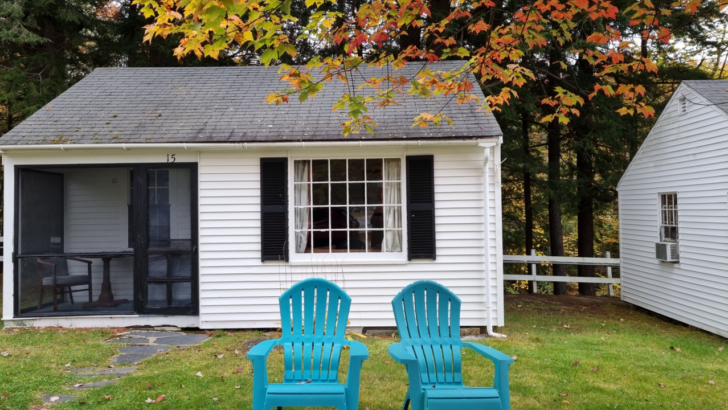Many invasive plants started innocently, as ornamental landscape plants in gardens or as agricultural or other functional plants. Only after these nonnative species were introduced did we realize their aggressive nature in this new environment, as they rapidly spread and outcompeted native plants. In addition to damaging native ecosystems, invasive plants in New Hampshire also hurt the economy, causing havoc for agriculture, outdoor recreation, and other industries and activities.
Some non-native plants have only recently been labeled invasive or prohibited from sale, which means you might find them growing in your garden! Learn how to identify some of the most common invasive plants in New Hampshire so you can replace them with beautiful, beneficial native plants.
Invasive Plants in New Hampshire
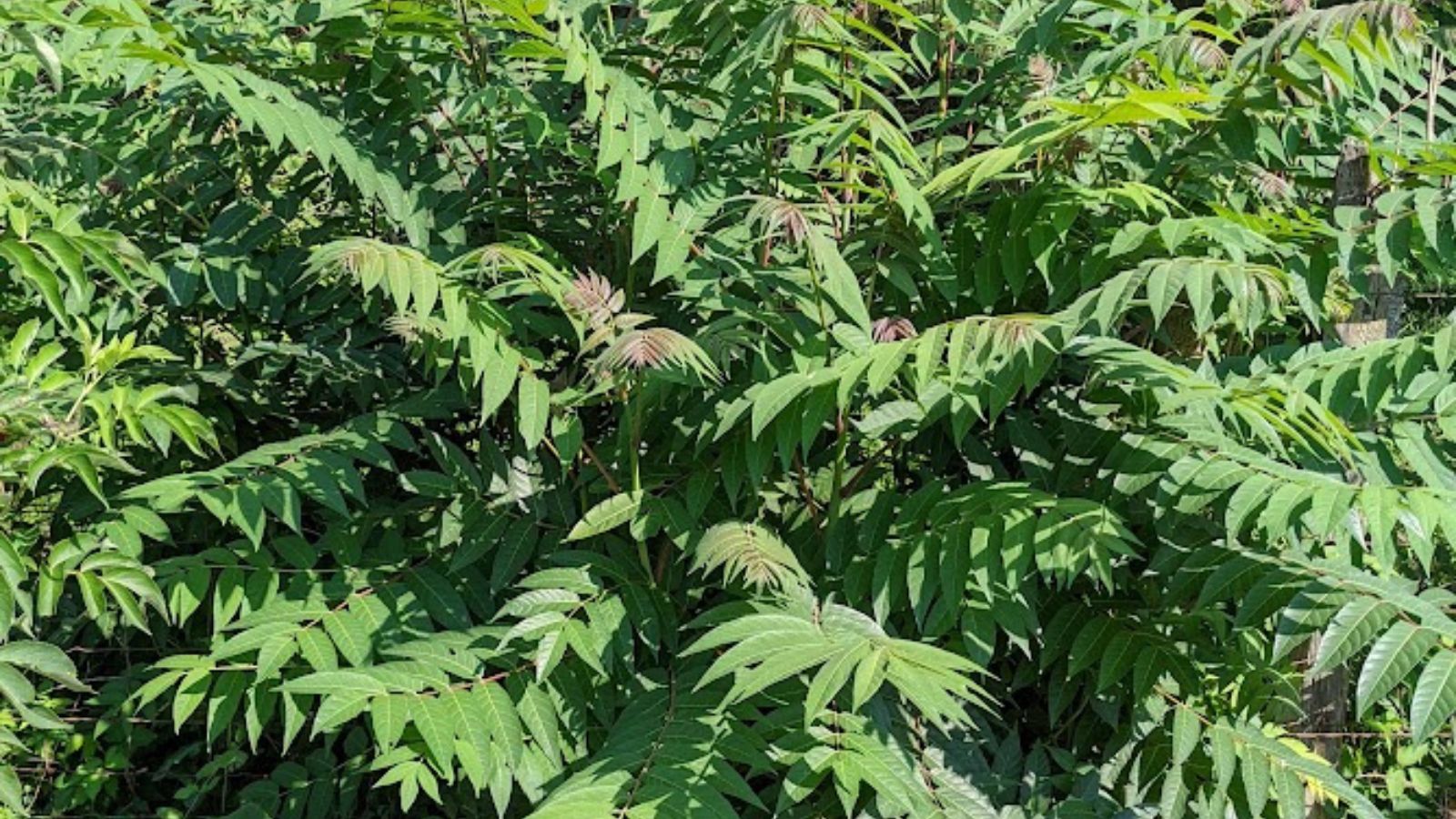
Image credit: Backyard Garden Lover.
The following list contains just some of the most common of New Hampshire’s many invasive plants. If you notice a plant not listed here with weedy tendencies, look it up, as it might also be an invasive species. Proper removal and disposal of invasive plants is important, as the most effective control method will vary depending on the species and its growth and reproductive habits.
Contact the University of New Hampshire Extension to learn how to remove any invasive plants you may find properly.
1. Burning bush (Euonymus alatus)
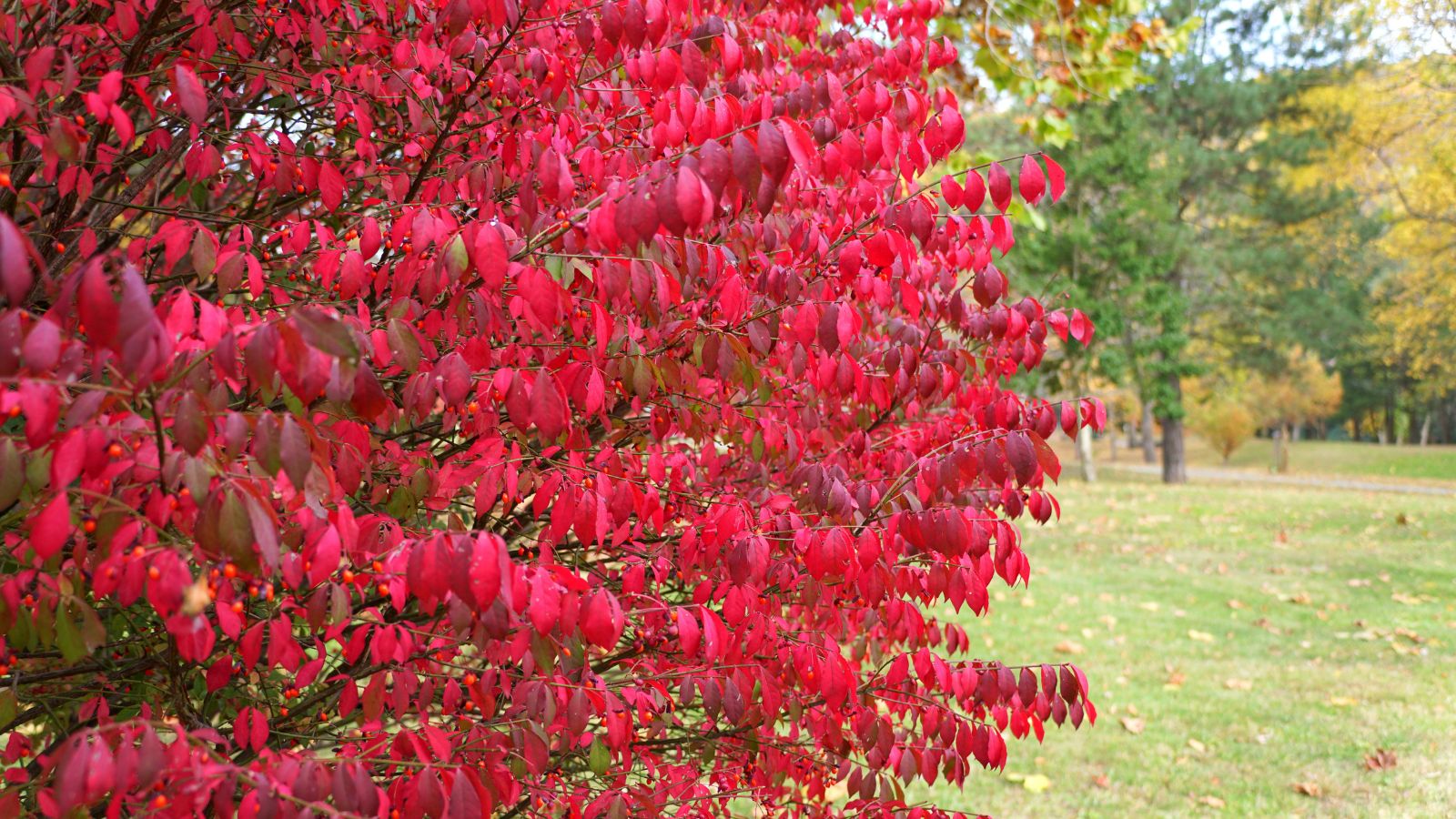
Image credit: Depositphotos.
A deciduous shrub, burning bush grows 20 feet tall and wide with simple, elliptic, opposite leaves that turn vibrant red in the fall. Its other common name, winged euonymus, comes from the lateral tan corky “wings” growing from the younger, green stems of the shrub. Inconspicuous greenish-yellow flowers bloom in late spring, followed by fleshy green berries that ripen to dark red in the fall.
A native euonymus, American strawberry bush (E. americanus), has very similar striking fall foliage and berries and makes a wonderful alternative. Black hall (Viburnum prunifolium) also has beautiful fall color, but black berries and the added bonus of white spring flowers.
2. Japanese barberry (Berberis thunbergii)

Image credit: Depositphotos.
Japanese barberry is a small deciduous shrub, averaging just two to four feet tall. The small, ovate, simple leaves have rounded tips and almost a spoon-like shape. Clusters of two to four yellowish flowers bloom in May, and small drupes ripen to red in the summer. Although slightly larger at three to eight feet, the less common European barberry (B. vulgaris) has a very similar appearance and is also invasive.
Native lowbush blueberry (Vaccinium angustifolium), another small shrub, has similar small, rounded leaves, pinkish flowers, and of course, edible blueberries.
Spicebush (Lindera benzoin), though taller at six to 12 feet, also produces yellowish flowers and red drupes (you will need both a male and female plant!).
3. Japanese knotweed (Polygonum cuspidatum)

Image credit: Depositphotos.
Though an herbaceous perennial, Japanese knotweed can reach heights and widths of 10 feet, giving it the appearance of a large shrub. The greenish stems are jointed and hollow, much like bamboo, but with broad, ovate leaves that have a flat base. Panicles of small, whitish, tubular flowers bloom in late summer, followed by three-winged seeds.
For a similarly sized shrub, plant wild raisin (Viburnum cassinoides), which produces white flowers in spring and showy fruit in fall. Obidient plant (Physostegia virginiana) has a bloom time similar to that of Japanese knotweed, with spikes of white or pink flowers from midsummer until frost.
4. Multiflora rose (Rosa multiflora)

Image credit: Backyard Garden Lover.
A large, aggressive, sometimes climbing shrub, multiflora rose can reach 15 feet or higher. Its long, arching stems form dense clumps and often have thorns. The alternate, compound leaves each have seven to nine leaflets with feathered margins at the base. Numerous small, white, fragrant flowers bloom in June and July, followed by rose hips that redden in the fall.
Plant one (or more!) of New Hampshire’s lovely native roses, such as pasture rose (R. carolina) or Virginia rose (R. virginiana).
5. Norway maple (Acer platanoides)

Image credit: Depositphotos.
The invasive Norway maple can be distinguished from the native sugar maple, which it strongly resembles, in a couple of ways. First, Norway maple leaves are wider than they are long, while sugar maple leaves are longer than they are wide. And when pulled off the branch, a Norway maple leaf will exude a milky white sap. The leaves turn pale orange to yellow in fall and persist long after other maples have shed theirs. Further, the winged seeds form in wide, oppositely arranged pairs at almost a 180-degree angle.
Sugar maple (A. saccharum) is an obvious native alternative to Norway maple, though the red maple (A. rubrum) also makes a nice replacement.
6. Oriental bittersweet (Celastrus orbiculatus)
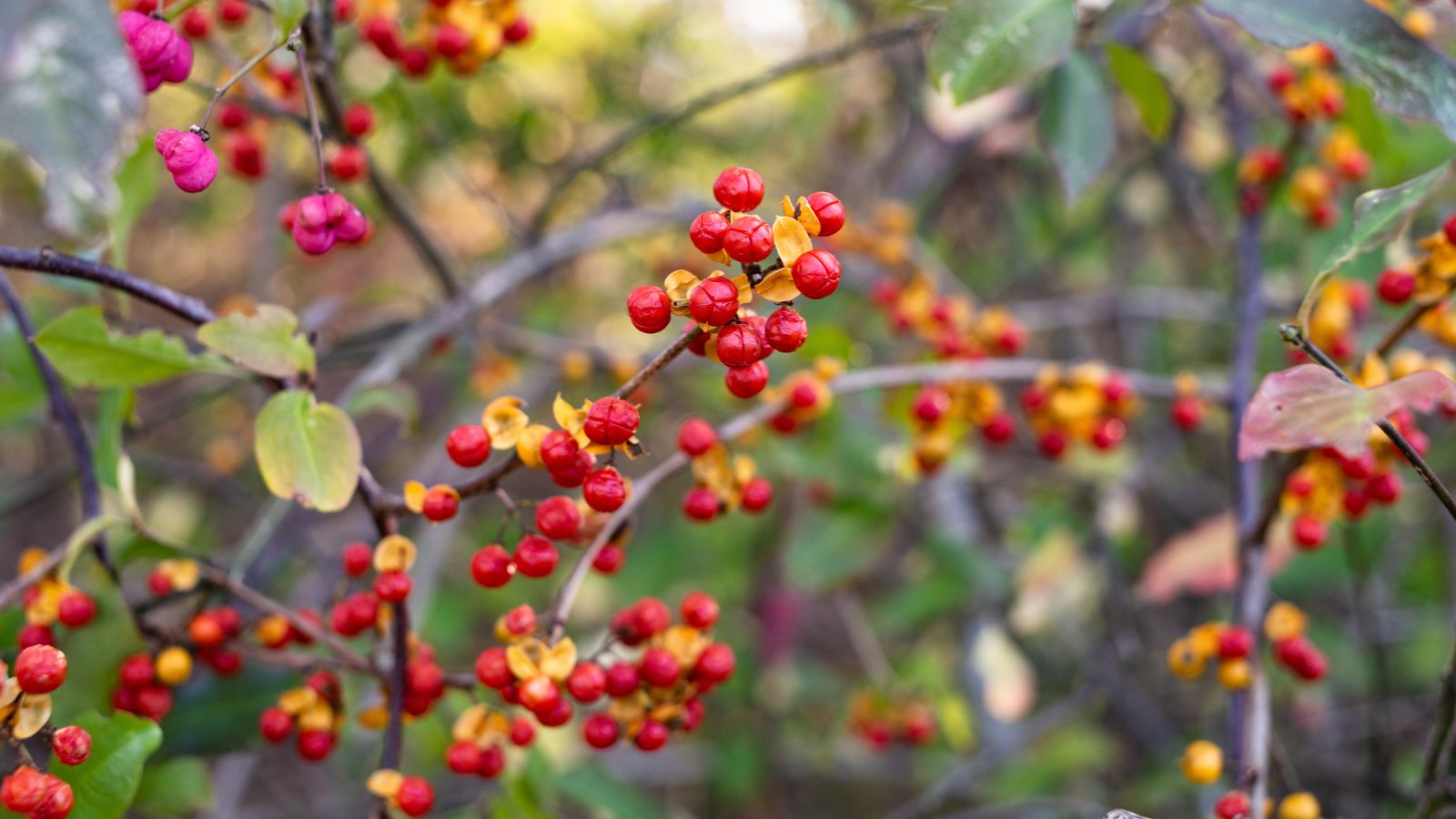
Image credit: Depositphotos.
A deciduous vine reaching lengths of 60 feet, oriental bittersweet is perhaps most easily identified in the autumn, when it retains its lemon-yellow fall foliage longer than most native plants. Look also for bright yellow seed capsules split open to reveal vibrant orange-red arils. These form in the axils of the stems, while native bittersweet has fruits at the ends. Tiny, greenish flowers bloom in spring. The alternate, ovate leaves are bluntly toothed and taper at the base.
Plant American bittersweet (C. scandens) or another native vine, such as trumpet honeysuckle (Lonicera sempervirens), which attracts hummingbirds with its red, tubular flowers.
7. Purple loosestrife (Lythrum salicaria)
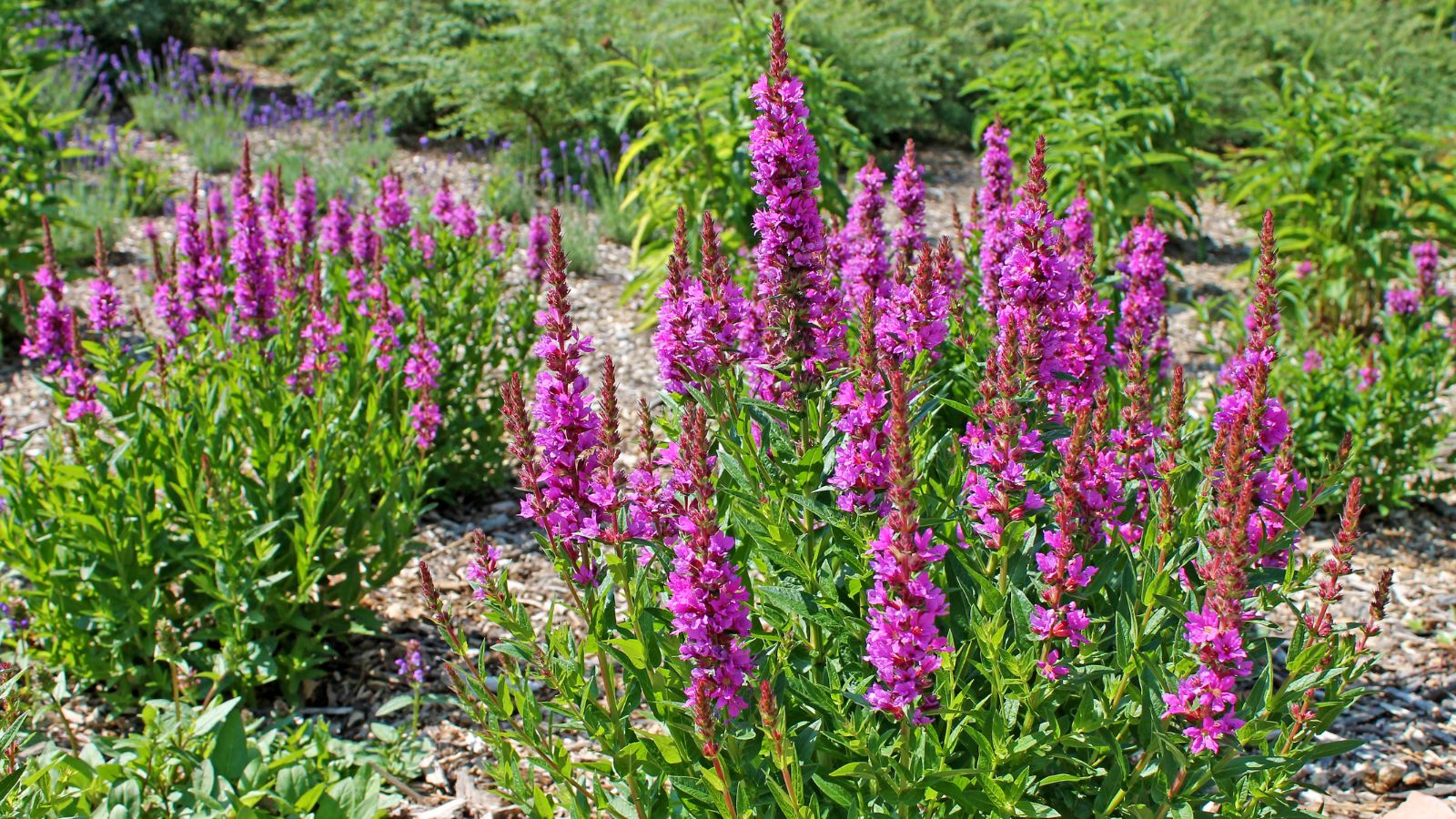
Image credit: Depositphotos.
Though an herbaceous perennial, purple loosestrife can tower more than six feet high. It has square to hexagonal stems that become woody in summer and lanceolate leaves that appear opposite or whorled. Perhaps most strikingly, it produces tall spikes of pink to purple flowers from June into October. It is mostly found in wetlands and similar moist habitats.
Similar native wildflowers include cardinal flower (Lobelia cardinalis), with its crimson blooms, and foxglove (Digitalis purpurea), with pink to purple blossoms (note: foxglove is toxic).
If you do discover an invasive plant in your landscape, don’t panic! Take steps to remove it properly, then have fun choosing a beautiful native plant to replace it with. Every little bit helps.

